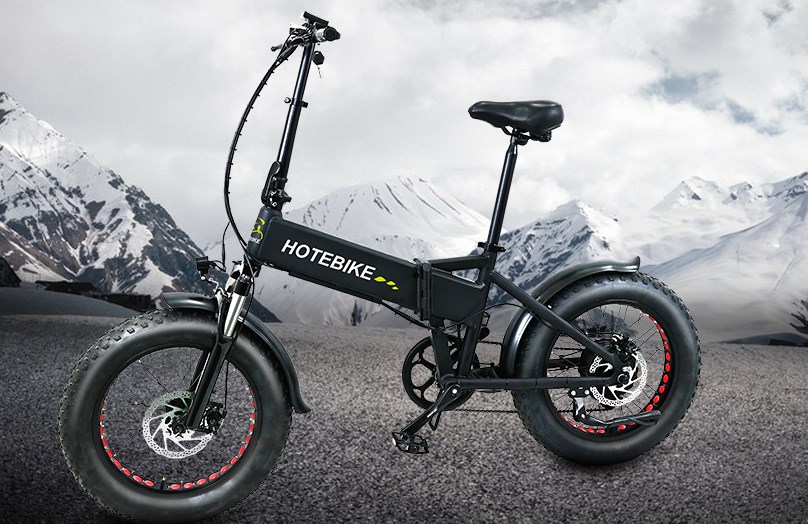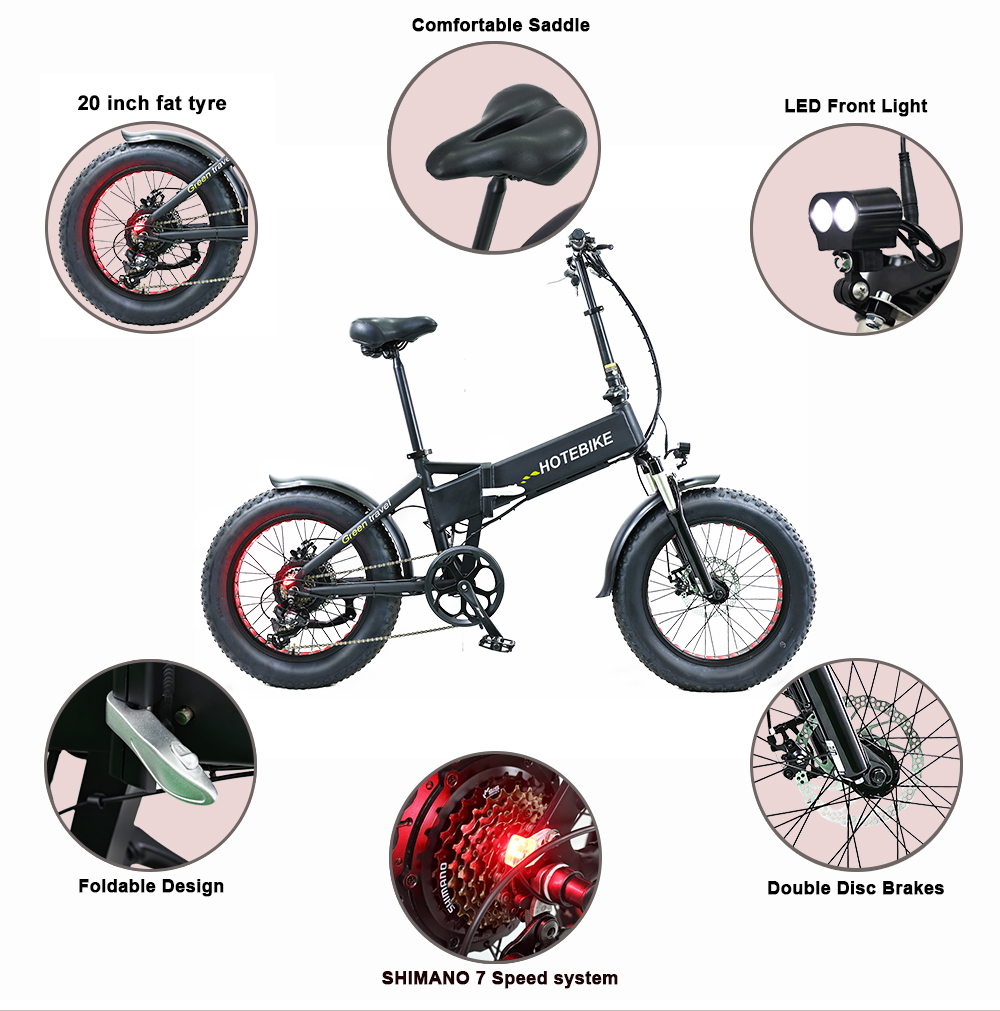In the rapidly evolving landscape of eco-friendly commuting alternatives, electric bikes, popularly known as e-bikes, have captured significant attention as promising modes of transport. Offering the sheer convenience and flexibility much coveted by the modern-day commuters, these electrical marvels have the potential to revolutionize the traditional cycling experiences, bringing a perfect blend of technology, sustainability, and fitness to the table.
However, despite their emerging popularity, the fundamental question that lingers is, “Can we ride an e-bike like a regular bike?” To delve into this intriguing question, this exhaustive exploration aims to journey through the intriguing world of e-bikes, delving into their mechanisms, benefits, downsides, and the potential future of e-bikes in the realm of personal transportation.
E-Bikes: A Glimpse into the New-Age Cycling Marvel
E-bikes, or electric bikes, embody the perfect fusion of traditional biking and modern technology. Equipped with a small electric motor that provides an added boost to your pedalling power, e-bikes have emerged as a popular choice for sustainable commuting. What makes e-bikes truly remarkable is the aspect of an assisted ride, which makes tasks like negotiating steep inclines and embarking on long-distance journeys notably smoother than a conventional bike.
However, the versatility of e-bikes goes beyond just assisted rides. While these bikes promise power assistance when required, they are capable of providing an unassisted, traditional ride akin to a regular bike when the situation so demands or simply when the rider prefers a more challenging and physically engaging ride.
 Unravelling the E-Bike Anatomy: Demystifying the Mechanisms
Unravelling the E-Bike Anatomy: Demystifying the Mechanisms
Understanding if one can ride an e-bike like a regular bike necessitates a comprehensive insight into the functioning of these modern marvels. Stripped down to their core, e-bikes operate on a simple yet effective combination of traditional bicycle mechanics and electric assistance.
E-bikes are powered by rechargeable batteries that energize a compact electric motor. This motor is designed to supplement your pedalling efforts. Depending on your preference or the requirements of your ride, you can choose to adjust the power delivered by the motor. It offers a range, from a gentle push to a robust thrust, making the riding experience as customizable as you wish.
However, where e-bikes truly earn their stripes is in their adaptability. Simply turn off the motor, and the e-bike can transform into a regular bike. At this juncture, the e-bike relies solely on the rider’s pedalling power for motion, thereby mimicking a regular bike’s mechanism.
The Joy of Riding an E-Bike Like a Regular Bike: The Advantages
Venturing into the benefits of riding an e-bike as one would ride a regular bike presents an alluring list of advantages. It’s not merely about the integration of technology into traditional biking; it is also about amplifying the benefits associated with cycling and making them more accessible to a wider audience.
Promotion of Physical Exercise: Perhaps the most significant advantage of riding an e-bike like a regular bike lies in the domain of health and fitness. The essence of cycling is cardiovascular exercise. Whether you’re using an e-bike or a traditional bicycle, the act of pedalling fosters cardiovascular health, builds endurance, strengthens the lower body, and promotes overall fitness. When ridden like a regular bike, e-bikes provide an excellent form of workout, ensuring the incorporation of a healthful activity into your daily commute or recreational pursuits.
Catering to Diverse Fitness Levels and Demographics: The adaptable design and function of e-bikes make them appealing and suitable for a diverse demographic. Regardless of your age, fitness level, or cycling experience, you can make the most of an e-bike. Whether you’re a seasoned cyclist looking for a more relaxed ride or a beginner aiming to improve your endurance and power, an e-bike can adapt to your requirements. When riding without electric assistance, these bikes can offer the same experience as traditional bikes, thereby not discounting any demographic from the joy and benefits of cycling.
Facilitating Uphill Rides and Long Journeys: The prospect of uphill rides and long commutes can be daunting for many cyclists. Here, the switchable functionality of e-bikes comes to the rescue. If you reside in a region with hilly or uneven terrain, e-bikes can turn a tiresome uphill climb into a pleasant, manageable journey. The electric assistance can be adjusted or completely turned off depending on the steepness of the ascent and your stamina, offering a flexible riding experience. Similarly, for long journeys, an e-bike empowers you with the choice of alternating between periods of electric-assisted and regular pedalling, making such journeys less strenuous and more enjoyable.
 Weighing the Scale: Understanding the Disadvantages of Riding an E-Bike like a Regular Bike
Weighing the Scale: Understanding the Disadvantages of Riding an E-Bike like a Regular Bike
While e-bikes offer an array of advantages, riding an e-bike like a regular bike does bring a few challenges to the fore.
Increased Weight: One of the major differences between e-bikes and regular bikes is their weight. Due to the addition of the electric motor and battery, e-bikes are considerably heavier than their traditional counterparts. This weight differential can make handling and transporting the e-bike slightly more challenging when the motor is not in use or when you’re riding it like a regular bike. Maneuvering a heavy e-bike, particularly in crowded cityscapes, can demand more physical effort than a lightweight traditional bike.
Higher Energy Consumption: Riding an e-bike without the electric assist can prove to be more energy-consuming, particularly for long distances or challenging terrains. A regular bike, given its lighter weight, would be easier to pedal without the assistance of a motor. Therefore, relying solely on manual pedalling on an e-bike can exhaust the rider more quickly than a regular bike would.
Potential Mechanical Complications: An e-bike has a more complex anatomy than a traditional bicycle due to the integration of the motor and battery system. As such, if issues arise, resolving them might require more specialized knowledge and could possibly be more costly. While the e-bike can still function as a regular bike during a mechanical failure of the electrical components, the added weight and potential imbalance caused by the inactive motor could impact the smoothness of the ride.
A Glimpse into the Future: The Prospects of E-Bikes
The narrative of e-bikes is still unfolding, and future developments promise to be intriguing. As we step into an era increasingly mindful of environmental sustainability and physical health, e-bikes are poised to play a significant role in personal transportation.
Advancements in technology, coupled with a growing awareness and preference for green transportation, are set to propel e-bikes into the spotlight. With potential improvements in design, battery life, weight reduction, and integration with smart technologies, the future of e-bikes looks promising. They not only hold the potential to redefine urban mobility but could also contribute to rural transportation, particularly in regions with challenging terrains.
Moreover, the advent of smart cities and the growing adoption of Internet of Things (IoT) technology could give rise to e-bikes with enhanced connectivity features. Imagine an e-bike that communicates with traffic signals, navigates routes, keeps track of fitness stats, and detects mechanical issues – a truly interconnected ride!
Drawing the Conclusion: E-Bikes vis-à-vis Regular Bikes
In conclusion, the answer to the initial question is a resounding yes. Yes, you can ride an e-bike just like a regular bike. The choice between electric assistance and the traditional biking experience is essentially a function of personal preference and situational demands.
E-bikes usher in flexibility in the cycling world. They allow riders to switch seamlessly between a power-assisted ride and a regular cycling experience, thereby catering to a diverse spectrum of cycling needs and preferences. While the added weight of e-bikes can be a downside when ridden as regular bikes, the multiple advantages they offer make e-bikes an appealing alternative or companion to conventional bikes.
Frequently Asked Questions (FAQ) on E-Bikes
Q1: Can you ride an e-bike without the battery?
Yes, it is certainly possible to ride an e-bike without the battery. However, without the assistance of the electric motor, the e-bike will function as a regular bike, with the significant difference of carrying the extra weight of the inactive motor. As a result, the e-bike may feel heavier and harder to pedal than a traditional bike.
Q2: Does an e-bike recharge while pedaling?
While the concept of recharging an e-bike through pedalling might sound appealing, it’s important to note that this is not a standard feature of most e-bikes. However, some advanced models do possess a regenerative braking system. This innovative mechanism captures some of the energy expended during braking and converts it back into electricity, which subsequently recharges the battery. It’s worth noting that this doesn’t generate a significant amount of power and should not be considered a primary charging method.
Q3: Can an e-bike replace a regular bike completely?
The answer to this question largely depends on personal requirements and preferences. While e-bikes offer additional features and more flexibility than regular bikes, factors like weight, cost, battery maintenance, and charging infrastructure are aspects that can affect a complete replacement decision. Nonetheless, for certain users and purposes, an e-bike can indeed replace a regular bike, especially for commuting purposes in urban areas, for those living in hilly regions, or for those with physical constraints that make regular cycling challenging.
E-bikes have been gaining recognition as a viable, versatile, and environmentally-friendly alternative for commuting, fitness, and leisure. Whether they can completely replace traditional bikes or will continue to coexist offering riders a broader spectrum of choices is a dynamic dialogue that time will unravel. Regardless, e-bikes are undeniably a worthy addition to the landscape of personal transportation.
 shuangye outdoor products
shuangye outdoor products
